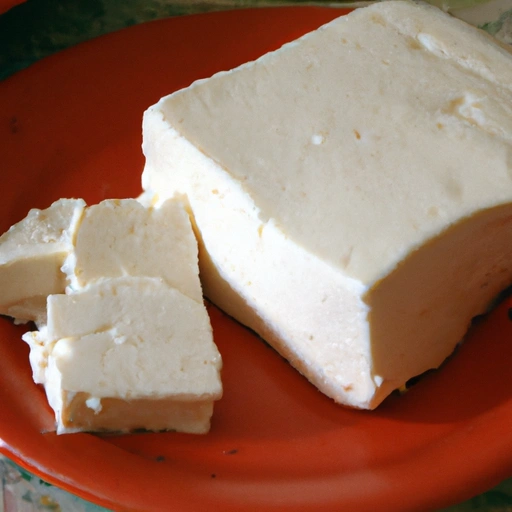Paneer Cheese
Description

Paneer cheese is a fresh, non-melting cheese commonly used in South Asian cuisine. It is known for its mild flavor and firm texture, which makes it an excellent addition to a variety of dishes. Paneer is traditionally made by curdling milk with a food acid, such as lemon juice or vinegar, and then pressing the curds to form a block. This cheese is unique as it does not involve the process of aging, making it ready to consume soon after production. In recipes, paneer is often cut into cubes and can be grilled, fried, or cooked in sauces.
Common uses
Paneer is often used as a primary ingredient in traditional Indian dishes such as Palak Paneer, Paneer Butter Masala, and Mattar Paneer. It is also served as a snack, marinated and grilled as Paneer Tikka, or used as a protein-rich addition to salads, wraps, and sandwiches. Paneer's versatility extends to its use in desserts, where it can be a base for sweets like Rasgulla and Sandesh.
Nutritional value
Calories
Paneer provides approximately 265 calories per 100 grams (3.5 oz).
Protein
It is rich in protein, offering about 18-20 grams (0.63-0.70 oz) per 100 grams (3.5 oz).
Fat
Paneer contains around 20-25 grams (0.70-0.88 oz) of fat per 100 grams (3.5 oz), a portion of which is saturated fat.
Carbohydrates
It is low in carbohydrates, with only 1-3 grams (0.035-0.105 oz) per 100 grams (3.5 oz).
Vitamins
Paneer is a good source of B-complex vitamins, particularly vitamin B12.
Minerals
It is rich in calcium and phosphorus, providing essential minerals for bone health.
Health benefits
Paneer is a high-protein food that supports muscle building and repair. The calcium content contributes to bone health, and it is also a good source of conjugated linoleic acid (CLA), a fatty acid linked to fat loss. Paneer can be part of a balanced diet and is especially beneficial for vegetarians seeking additional protein sources.
Potential risks
Due to its fat content, excessive consumption of paneer can lead to weight gain. It may also not be suitable for individuals with lactose intolerance or those following a vegan diet. Additionally, as paneer is often high in sodium, those with high blood pressure should consume it in moderation.
Common recipes
Paneer is a star ingredient in Indian dishes such as Paneer Tikka Masala, Saag Paneer, and Paneer Bhurji. It is also used in the preparation of various Indian sweets and snacks.
Cooking methods
This cheese can be grilled, stir-fried, sautéed, or simmered in gravy. It holds its shape well, making it ideal for kebabs and skewers.
Pairing with other ingredients
Paneer pairs wonderfully with robust spices and herbs like garam masala, cumin, coriander, and turmeric, as well as with vegetables such as spinach, peas, and bell peppers.
Summary
Paneer cheese is a versatile and widely enjoyed food ingredient with a rich history in South Asian cuisine. Its mild taste and firm texture make it suitable for both savory and sweet dishes. Paneer is nutritious, offering protein, calcium, and essential vitamins, while also being adaptable to countless recipes. However, mindful consumption is advised due to its fat content and sodium levels. Paneer's adaptability in cooking methods and pairings has earned it a place in kitchens around the world.